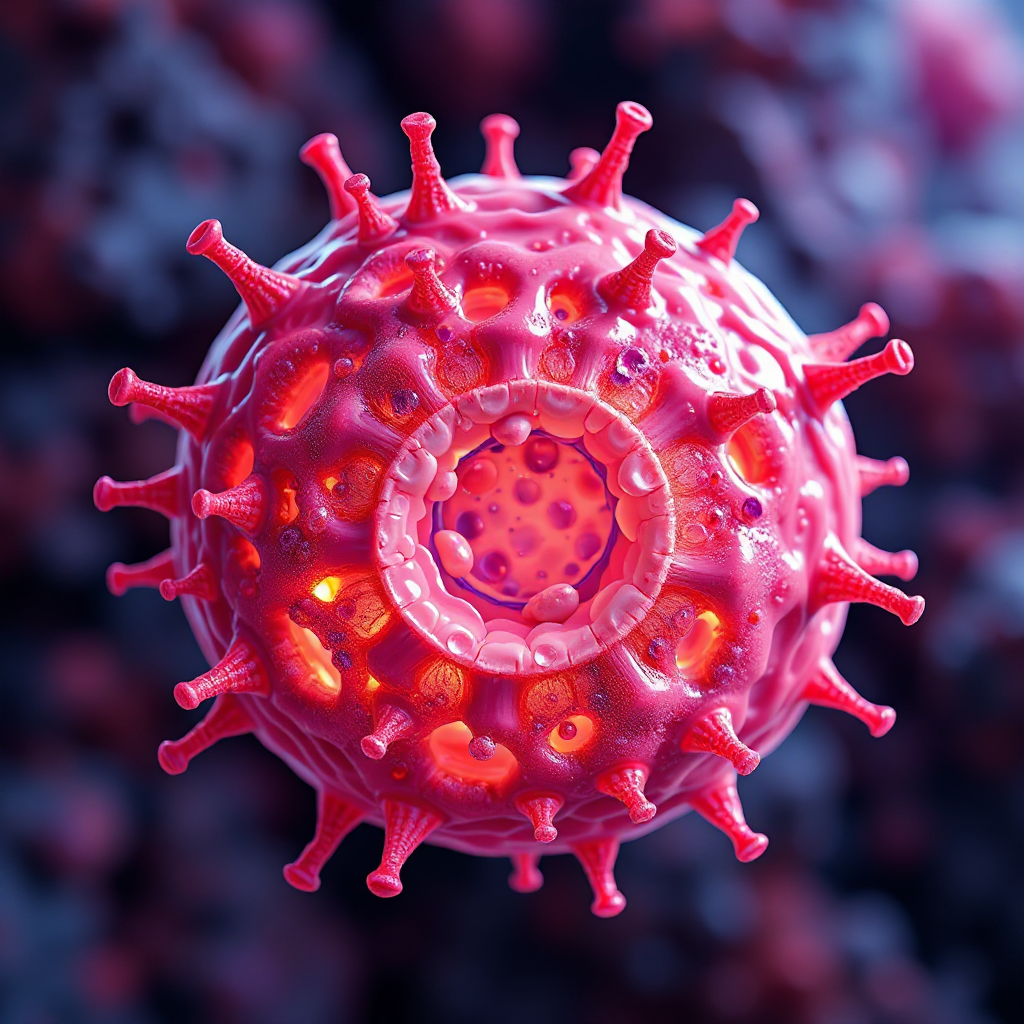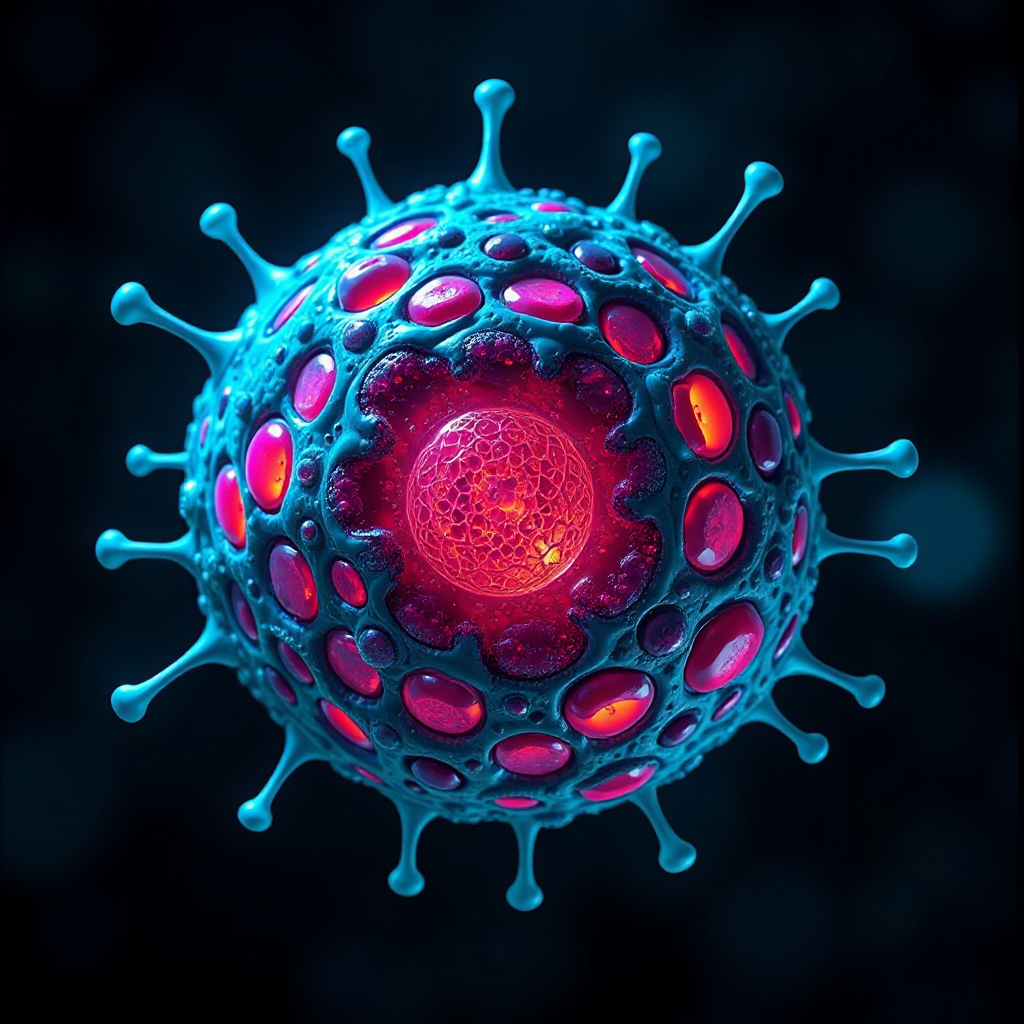What is Squamous Cell Carcinoma and Its Symptoms

Squamous cell carcinoma is one of the most common types of skin cancer. It begins in the squamous cells, which form the outer layer of your skin. This condition often develops due to prolonged exposure to ultraviolet (UV) rays from the sun or tanning beds. Early detection plays a critical role in improving outcomes. When caught early, the cancer is less likely to spread, and the chances of recurrence drop significantly. Recognizing the symptoms and seeking timely medical attention can make a life-saving difference.
Key Takeaways
Squamous cell carcinoma is a type of skin cancer. It starts in squamous cells, which are in the top skin layer. Finding it early helps with better treatment.
Watch for signs like rough spots, sores that won't heal, or hard bumps on your skin. See a skin doctor if you notice anything strange.
Protect your skin from the sun by using sunscreen with SPF 30 or more. Wear clothes that cover your skin and stay away from tanning beds.
Check your skin often and visit a skin doctor every year. This can help find problems early and make treatment work better.
Learn about your risks, like having light skin or getting sunburned often. Knowing this can help you stop squamous cell carcinoma before it starts.
What is Squamous Cell Carcinoma?

Definition and Overview
Squamous cell carcinoma is a type of skin cancer that begins in the squamous cells. These cells make up the upper layer of your skin, known as the epidermis. Unlike basal cells, which are found in the lower epidermis, squamous cells are flat and form the outermost barrier of your skin. When these cells grow uncontrollably, they can develop into cancer.
Skin cancers differ based on where they originate and how they behave. The table below highlights the differences between squamous cell carcinoma and other common types of skin cancer:
Type of Skin Cancer | Origin in Skin Layers | Characteristics |
|---|---|---|
Squamous Cell Carcinoma | Originates from squamous cells in the upper epidermis | Flat cells that grow uncontrollably, leading to cancer. |
Basal Cell Carcinoma | Originates from basal cells in the lower epidermis | Constantly dividing cells that replace squamous cells; less aggressive than SCC. |
Melanoma | Originates from melanocytes that produce melanin | More aggressive and can spread quickly; associated with pigment changes. |
How It Develops
You may wonder how squamous cell carcinoma forms. Prolonged exposure to ultraviolet (UV) rays from the sun or tanning beds damages the DNA in your skin cells. Over time, this damage causes the squamous cells to mutate and grow uncontrollably. These abnormal cells can form lesions or tumors on your skin. While this type of cancer often develops on sun-exposed areas, it can also appear in less common places, such as inside your mouth or on your genitals.
Why Early Detection Matters
Catching squamous cell carcinoma early can save your life. When detected in its initial stages, this cancer is highly treatable. Early treatment reduces the risk of the cancer spreading to other parts of your body. You should regularly check your skin for unusual changes, such as persistent sores or scaly patches. If you notice anything suspicious, consult a dermatologist immediately. Early action ensures better outcomes and lowers the chances of recurrence.
Symptoms of Squamous Cell Carcinoma

Common Signs
Squamous cell carcinoma often presents with noticeable changes on your skin. You might observe:
Rough, red, scaly patches that feel dry or irritated.
Open sores that refuse to heal and may have raised edges.
Thickened, wart-like growths that could ooze or crust.
Firm, dome-shaped bumps or nodules that appear on the skin.
These symptoms can vary in appearance. For instance, some lesions may resemble age spots or even develop into a tiny, horn-like projection. If you notice any of these signs, it’s essential to consult a dermatologist promptly.
Affected Areas of the Body
Squamous cell carcinoma typically develops on parts of your body exposed to the sun. These include your face, ears, neck, and hands. However, it can also appear in less common areas, such as:
Genital or anal regions, where it may present as a wart-like or red patch.
The sun’s ultraviolet rays play a significant role in damaging your skin cells, leading to cancer in these areas. Regularly protecting your skin can help reduce this risk.
Advanced Symptoms
In advanced stages, squamous cell carcinoma may cause more severe symptoms. You might experience:
Pain or tenderness in the affected area, especially if the lesion grows deeper into the skin.
Rapid growth of the lesion, along with crusting or bleeding.
Advanced cases can become more challenging to treat. Early detection remains crucial for better outcomes. For instance, survival rates for early-stage squamous cell carcinoma are nearly 100%, while advanced stages see a decline in survival rates.
Note: Always monitor your skin for unusual changes. Early intervention can prevent complications and improve your prognosis.
When to See a Doctor
Warning Signs to Watch For
Recognizing the warning signs of squamous cell carcinoma early can make a significant difference in treatment outcomes. You should pay attention to the following symptoms:
A persistent, scaly red patch with irregular borders that may crust or bleed.
Flat, reddish, and scaly skin patches.
Firm, red bumps that appear on your skin.
Wart-like growths that ooze or crust.
A rough patch on your lip that develops into an open sore.
A sore or rough patch inside your mouth.
A wart-like or red patch on your genitals or anus.
If you notice any of these changes, consult a dermatologist promptly. Early intervention can prevent the condition from progressing to advanced stages.
Tip: Keep a close eye on any unusual skin changes, especially if they persist for more than a few weeks.
Importance of Regular Skin Examinations
Performing regular skin checks is one of the most effective ways to detect abnormalities early. You should examine your skin from head to toe at least once a month. Look for new growths, changes in existing moles, or any unusual patches. Use a mirror to inspect hard-to-see areas like your back or scalp.
Routine skin examinations allow you to spot potential issues before they become serious. Early detection of squamous cell carcinoma ensures that treatment options remain effective and less invasive.
Role of Dermatologists in Diagnosis and Treatment
Dermatologists play a crucial role in diagnosing and treating squamous cell carcinoma. They use advanced techniques to identify and manage the condition. For diagnosis, they may perform a biopsy to confirm if a suspicious lesion is cancerous.
Treatment options vary based on the stage of the cancer. Dermatologists often recommend surgical procedures like Mohs surgery or excisional surgery to remove the affected tissue. For advanced cases, immunotherapy drugs such as cemiplimab or pembrolizumab have shown promising results. Radiation therapy may also be used to manage the disease.
Note: Regular visits to a dermatologist can help you stay ahead of potential skin issues. They can provide professional guidance and monitor your skin for any concerning changes.
Causes and Risk Factors of Squamous Cell Carcinoma
Primary Causes
Prolonged UV Exposure
Prolonged exposure to ultraviolet (UV) radiation is the leading cause of squamous cell carcinoma. UV rays damage the DNA in your skin cells, triggering mutations that disrupt normal cell growth. Over time, these mutations can lead to cancer. Sources of UV radiation include sunlight, tanning lamps, and tanning beds. Studies show that about 90% of nonmelanoma skin cancers, including squamous cell carcinoma, are linked to UV exposure.
UV radiation not only damages DNA but also inactivates tumor suppressor genes like p53, which normally prevent abnormal cells from surviving. This allows precancerous cells to grow unchecked. Protecting your skin from UV rays is crucial to reducing your risk.
Use of Tanning Beds
Using tanning beds significantly increases your risk of developing squamous cell carcinoma. Indoor tanning exposes your skin to concentrated UV radiation, which accelerates DNA damage. Research indicates that individuals who use tanning beds face a 67% higher risk of squamous cell carcinoma compared to non-users. Avoiding tanning beds is a simple yet effective way to protect your skin.
Risk Factors
Fair Skin or Light-Colored Eyes
Your skin type plays a significant role in your risk of squamous cell carcinoma. People with fair skin, blond or red hair, and blue or green eyes are more vulnerable. These traits indicate lower levels of melanin, the pigment that protects skin from UV damage. If your skin freckles or burns easily, you should take extra precautions to shield it from the sun.
History of Sunburns
A history of sunburns, especially those that caused blisters, increases your risk of squamous cell carcinoma. This risk applies to sunburns during childhood, adolescence, and adulthood. Protecting your skin from sunburns at any age can help lower your chances of developing this cancer.
Evidence Type | Description |
|---|---|
Sunburn History | Blistering sunburns in childhood or teenage years raise the risk of SCC. |
Adulthood Risk | Sunburns in adulthood also contribute to the likelihood of developing SCC. |
Weakened Immune System
A weakened immune system dramatically raises your risk of squamous cell carcinoma. Organ transplant recipients, for example, are about 100 times more likely to develop this cancer due to immunosuppressive medications. Conditions like HIV, leukemia, or lymphoma also increase your vulnerability. If you have a compromised immune system, regular skin checks are essential.
Exposure to Harmful Chemicals
Exposure to certain chemicals, such as arsenic, can increase your risk of squamous cell carcinoma. These substances damage your skin cells over time, making them more susceptible to cancer. If your work or environment involves contact with harmful chemicals, take protective measures to minimize exposure.
Prevention and Early Detection
Preventive Measures
Use sunscreen with high SPF
Protecting your skin from harmful UV rays is essential. Use a broad-spectrum sunscreen with an SPF of 30 or higher to block both UVA and UVB rays. Apply it generously at least 30 minutes before going outside. Reapply every two hours, especially after swimming or sweating. Sunscreen acts as a shield, reducing the risk of DNA damage that can lead to squamous cell carcinoma.
Wear protective clothing and hats
Clothing can provide an extra layer of defense against UV rays. Long-sleeve shirts, wide-brimmed hats, and sunglasses are excellent choices. These items help shield your skin and eyes from direct sunlight. Accessories like sunglasses also protect sensitive areas, such as the skin around your eyes, from UV exposure.
Avoid tanning beds and excessive sun exposure
Tanning beds expose your skin to concentrated UV radiation, significantly increasing your risk of skin cancer. Avoid them entirely. Limit your time in the sun, especially between 10 a.m. and 4 p.m., when UV rays are strongest. Staying in the shade during these hours can further reduce your risk.
Tip: Combine sunscreen use with protective clothing for maximum protection against UV rays.
Self-Examination Tips
Regular self-examinations can help you detect early signs of squamous cell carcinoma. Follow these steps:
Stand in front of a mirror to check your face, ears, neck, and chest.
Examine your arms, underarms, and hands.
Sit down to inspect your thighs, legs, and feet.
Use a hand mirror to check hard-to-see areas like your back and scalp.
Look for new or changing growths, sores that bleed and don’t heal, or rough patches that crust or bleed. Pay attention to moles that change in size, shape, or color. If you notice anything unusual, consult a dermatologist promptly.
Importance of Routine Dermatology Visits
Routine visits to a dermatologist are crucial for early detection. Schedule yearly skin checks if you’re at average risk. High-risk individuals, such as those with a history of skin cancer, should visit more frequently. Dermatologists can identify suspicious lesions and provide timely treatment. Monthly self-examinations complement these visits, ensuring you stay proactive about your skin health.
Note: Early detection improves treatment outcomes and reduces the risk of complications.
Squamous cell carcinoma is a common yet treatable form of skin cancer. Early detection significantly improves survival rates, as cases caught early can often be treated effectively with minimal risk of recurrence. You can protect yourself by recognizing symptoms like non-healing sores or unusual lumps and consulting a dermatologist promptly. Prevention starts with simple steps, such as using sunscreen, avoiding tanning beds, and quitting smoking. Regular skin checks and awareness of risk factors empower you to take control of your skin health.
Tip: Stay vigilant about changes in your skin and prioritize routine dermatology visits.
FAQ
What is the difference between squamous cell carcinoma and melanoma?
Squamous cell carcinoma develops in the squamous cells of the skin's outer layer. Melanoma originates in melanocytes, the cells that produce pigment. Melanoma spreads faster and is more aggressive. Squamous cell carcinoma is less likely to spread if treated early.
Can squamous cell carcinoma go away on its own?
No, squamous cell carcinoma does not heal without treatment. Ignoring it allows the cancer to grow and potentially spread. Early medical intervention ensures effective treatment and prevents complications.
How can you tell if a skin lesion is cancerous?
Look for changes in size, shape, or color. Non-healing sores, scaly patches, or wart-like growths may indicate cancer. If you notice these signs, consult a dermatologist for evaluation.
Tip: Use the "ABCDE" rule (Asymmetry, Border, Color, Diameter, Evolving) to assess suspicious lesions.
Is squamous cell carcinoma life-threatening?
Squamous cell carcinoma can become life-threatening if untreated. It may invade deeper tissues or spread to other parts of your body. Early detection and treatment significantly reduce risks.
Can sunscreen prevent squamous cell carcinoma?
Yes, sunscreen helps protect your skin from harmful UV rays, reducing your risk of squamous cell carcinoma. Use a broad-spectrum sunscreen with SPF 30 or higher daily. Reapply every two hours when outdoors.
Note: Combine sunscreen with protective clothing for maximum protection.
See Also
Understanding Hepatocellular Carcinoma: Key Symptoms to Recognize
Exploring Carcinoid Syndrome: Symptoms You Should Know
Identifying Symptoms of Basal Cell Carcinoma: A Guide
